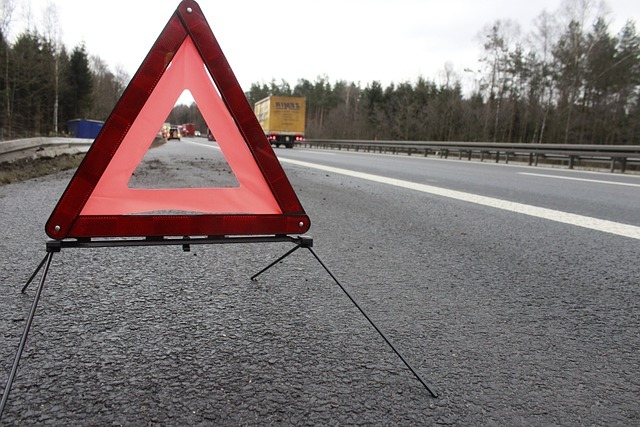- 11% of respondents said they would stay in their vehicle.
- 65% said they would stand in front of, or to the side of, their vehicle.
Let’s see why both of these are terrible ideas.
Staying in the vehicle. This is by far the most dangerous option. Vehicles stranded on the hard shoulder can get hit by other motorway users. That may happen more often than you think. We can’t verify this statistic, but one source we’ve seen claims that one in ten of all motorway collisions involve a stationary vehicle on the hard shoulder. Even being clipped by a passing vehicle could result in injuries if you’re inside the stranded car.
Standing next to, or in front of, your vehicle. Not as bad as the first option, but still dangerous. For example, if your vehicle is struck, and you’re standing in front of it, there’s a fair chance that it will plough straight into you. Stationary vehicles also get knocked sideways in collisions, or spun around, not to mention ejecting hard fragments at high speeds. Therefore, even standing to the vehicle’s side is a risk.
Bear in mind that a car or lorry travelling at 70 mph covers over 100 feet (31m) per second. It covers 20 feet (6 m) in 0.2 seconds. Unless you’re Superman, good luck getting out of the way in time.
So, what should you do if you break down on the hard shoulder?
The same RAC article we’ve cited above has the following advice. Although all the points are important, we’ve highlighted a couple of them:
- Pull over on the hard shoulder if there is one
- Turn on your hazard lights and sidelights
- Turn on rear fog lights too if the visibility is poor and you can’t see over 100 metres
- Get out of your vehicle if it’s safe using the doors furthest from traffic. Wear bright or high vis clothes if you have any
- If there’s a safety barrier, wait behind it to the rear of your vehicle. Watch out for potholes and steep drops
- If there’s no safety barrier, stand to the rear of your vehicle far away from traffic
- Keep your eyes on the traffic at all times
- Keep calm and stay where you are until the patrol arrives
The obvious shortcoming with this advice is that it doesn’t work for anyone with mobility problems. In that case, says the RAC, do this instead:
- Stay inside the vehicle with your seatbelt on
- If possible, move everybody to the passenger side of the vehicle
- Call 999 to make them aware
- Keep calm and stay where you are until the patrol arrives
One sobering statistic, one heartening one
As we were researching this article, we came across a sobering statistic: in the UK, more than 100 people a year are either killed or injured on the hard shoulder every year.
Obviously that’s horrible, but here’s another statistic that puts it into perspective. In 2019, UK motorways carried 70.5 billion vehicle miles – in other words, the total distance covered by all the UK vehicles on motorways in that year was 70.5 billion miles.
That tells us that the chances of you arriving safe and sound after your next motorway trip are really, really, really, really good.
And you can make the odds even better by following the RAC guidelines if you break down on the hard shoulder.
The WVS blog covers a wide range of automotive topics, from the contentious to the light-hearted. We are an independent garage specialising in the VW group marques, including Audi, Volkswagen, Skoda and SEAT. WVS provides services, repairs and MOTs, delivering a main dealer level of care at affordable prices. To book your vehicle in, or for any enquiries, get in touch.


